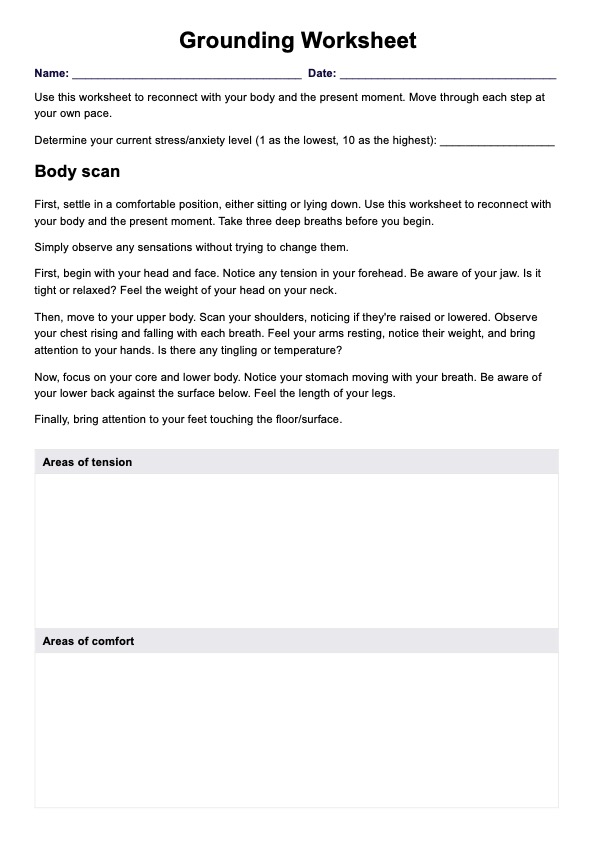Grounding helps individuals reconnect with the present moment, reduce anxiety, and stabilize their emotions.

Grounding Worksheet
Learn about the benefits of Grounding Worksheet to help clients manage anxiety and stress.
Use Template
Grounding Worksheet Template
Commonly asked questions
Individuals with anxiety, post-traumatic stress disorder (PTSD), stress, borderline personality disorder, and related conditions, or anyone needing to manage overwhelming emotions, can benefit from grounding exercises.
Grounding exercises should be done regularly, ideally daily, and during moments of acute stress or anxiety.
EHR and practice management software
Get started for free
*No credit card required
Free
$0/usd
Unlimited clients
Telehealth
1GB of storage
Client portal text
Automated billing and online payments











